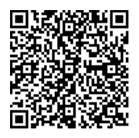Compressus Patents and Patents Pending
Compressus’ MEDxConnect technology is powered by core technologies developed over the past 12 years. The core of MEDxConnect includes patented and patent pending algorithms and processes that enable the “Virtualization of Healthcare” and the optimization of workflow.
CoherentInformationDistribution™
Assuring the “Autonomous Routing of Network Messages,” patent number US 7,630,371 includes analytics for routing techniques that are based on a host of factors ranging from physical network, message content, and business process rules. Additionally, the patent contains processes to translate healthcare protocols such as DICOM and HL7 messages, as well as ubiquitous formats for assuring readability and coherence.
Australian patent number 2006294986 also guarantees the autonomous routing of network messages. The patent was reviewed and granted by the Common wealth of Australia Patent Office based on the U.S. Autonomous Routing Patent.
U.S. Patent Number US 7,836,081 enables the successful escalation and notification of workflow items. This includes the utilization of specific methods and analytics to build a dynamic escalation, verification, and notification tree to ensure that work items are addressed by qualified personnel in a timely fashion.
Compressus has additional patents pending that define and expand routing into heuristic passed information distribution and transfer techniques as well as extended autonomous routing techniques.
CoherentInformationAwareness™
In an effort to deliver a dynamic system management dashboard, U.S. Patent number US 8,131,562 defines a specific system and methods for acquiring, compiling and displaying data indicative of healthcare data workflow. The displayed data simplifies the monitoring and identification of inefficiencies such as bottlenecks in the enterprise and measures individual component performance. The patent includes the reporting of inefficiencies that allow C-level healthcare executives to define operational areas for improvement and aid in the allocation of capital expenditures to optimize operations.
Patent pending U.S. Patent Application number 11/944,531, entitled, “Virtual Worklist for Analyzing Medical Images,” addresses the methods and processes required to view irrespective of location the medical information within an entire healthcare enterprise. The technology includes the selective display of information based on the user’s needs, expertise and criticality of the information.
Additionally, patent Pending U.S. Patent Application number 11/944,534, entitled, “Pre-Fetching Patient Data for Virtual Worklists,” includes the algorithms required to determine enterprise wide information that should be available to clinicians prior to diagnosis. The technology is based on Compressus design heuristic algorithms that evolve during the deployment and use of the MEDxConnect product line.
CoherentBigDataDissemination™
U.S. Patent number US 7,653,252 assures that key features within an image are discovered for the purpose of rapid data transfer. More specifically, the information within or outside a boundary is given a figure of merit for the purpose of selecting multiple compression schemes within the same image. The result improved network performance, enhanced teleradiology and second opinion support within a hospital enterprise.
To further the successful exchange of images, U.S. Patent Number US 7,801,382 outlines a method and apparatus for adjustable image compression. This includes the application of various compression coding techniques to an image based on image acquisition device, body type, and purpose of diagnosis. The patent describes a method that uses the characteristics of the generated imagery to select an optimal coding scheme for the image waveform. The patent improves storage, network, and display performance for growing healthcare systems.


















